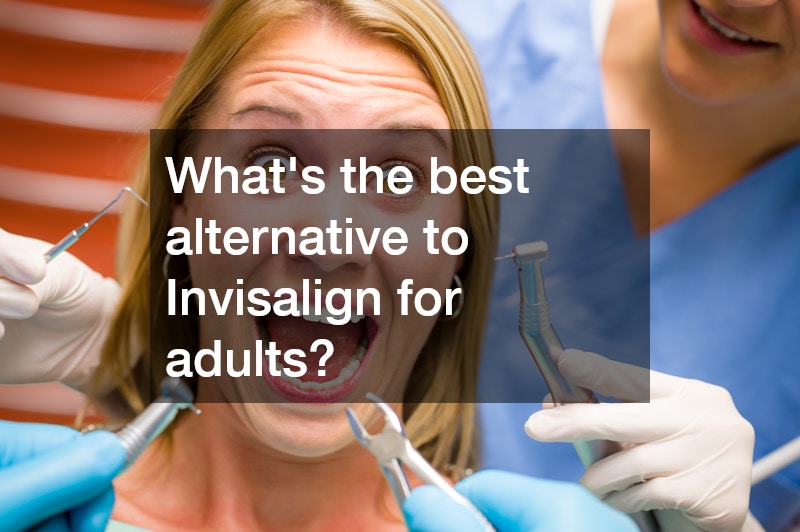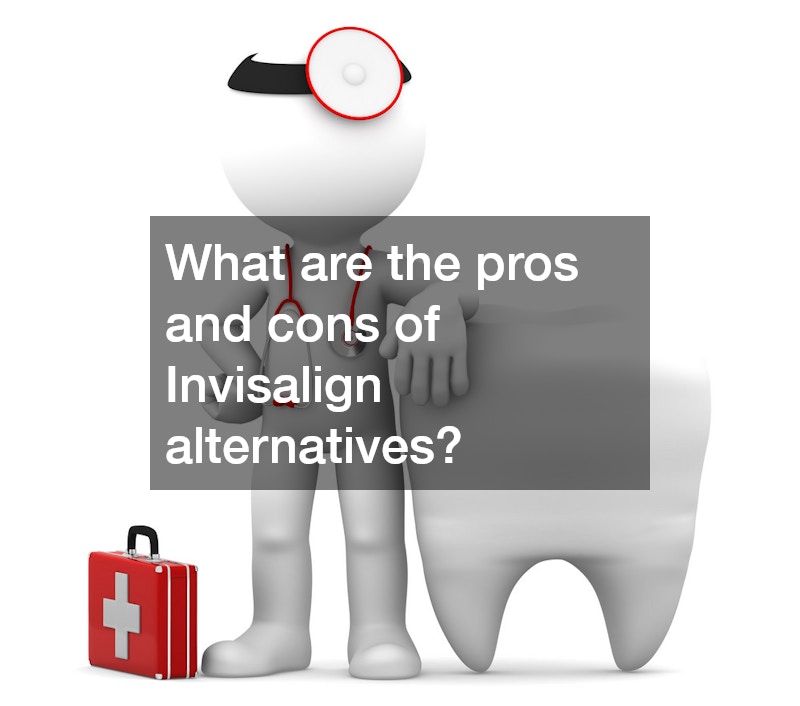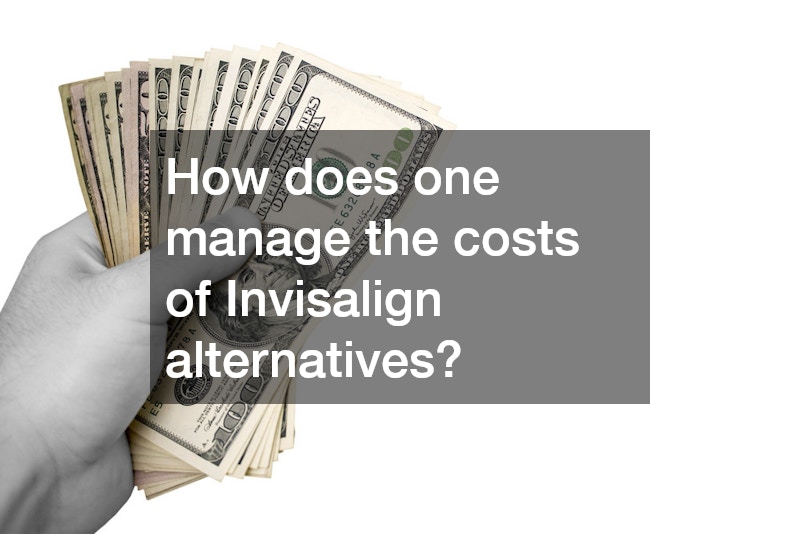As the demand for straighter, healthier smiles continues to rise, many individuals are exploring options beyond Invisalign. Whether due to cost, aesthetics, lifestyle compatibility, or treatment requirements, there are numerous reasons why someone might seek alternatives to Invisalign for teeth alignment. This comprehensive guide is designed to help you understand the variety of available treatments and make an informed decision based on your unique dental needs, budget, and personal preferences.
Choosing an alternative to Invisalign doesn’t mean compromising on results. In fact, depending on your dental condition and goals, you might find that other methods offer even greater benefits in terms of efficiency, affordability, or appearance. With advancements in dental service technology and a wide array of treatment options—from traditional braces to modern clear aligners—there’s no shortage of ways to achieve a perfect smile.
Throughout this article, we will explore the different types of Invisalign alternatives, compare their effectiveness, and provide practical advice for selecting the right orthodontist or dental professional. We’ll also examine how factors like health insurance plan coverage and clean water accessibility can impact treatment outcomes. Whether you’re seeking a cosmetic dental procedure or comprehensive family dentistry care, this guide will equip you with everything you need to choose the right path forward.

What are the different types of alternatives to Invisalign?
There are several orthodontic options that serve as effective alternatives to Invisalign, each with unique characteristics, benefits, and limitations. Traditional metal braces remain one of the most common choices. They consist of metal brackets and wires and are often recommended for more complex dental alignment cases. Despite their noticeable appearance, they are extremely effective and typically cost less than Invisalign.
Ceramic braces function similarly to traditional metal braces but use tooth-coloured or clear brackets, making them more discreet. These are a popular choice for those seeking cosmetic dentistry solutions without opting for fully transparent options. While they offer aesthetic advantages, ceramic braces may be more fragile and slightly more expensive.
Lingual braces are another option, where the brackets and wires are placed on the inside of the teeth. This hidden placement makes them virtually invisible, though they can be more uncomfortable and difficult to clean. Clear aligners, offered by a range of brands aside from Invisalign, are also widely used. These aligners are nearly invisible and removable, allowing greater flexibility in eating and oral hygiene.
For individuals with missing teeth or additional oral health needs, treatments such as dental implants may also be considered alongside orthodontic options to create a fully functional and aesthetically pleasing smile.
How do clear aligners compare to Invisalign?
Clear aligners from other brands present several similarities and differences when compared to Invisalign. One of the primary distinctions is cost. Many alternative aligners offer more affordable pricing, which can be especially appealing to patients with limited budgets or those whose medical insurance does not fully cover orthodontic treatments. Cost savings can often be achieved through online-direct models that cut out the middleman.
Aesthetically, most clear aligners resemble Invisalign in appearance—transparent, discreet, and custom-fitted to your teeth. However, some alternatives might lack the fine-tuning and refinements available through Invisalign’s advanced technology. In terms of effectiveness, both Invisalign and its competitors are well-suited for mild to moderate alignment issues. For more complex cases, however, Invisalign’s technology, which includes 3D imaging and progress tracking, may offer an advantage.
Comfort and convenience are often rated similarly among clear aligner options, although some users report differences in fit, material quality, or required wear time. The convenience of at-home impression kits and virtual check-ins with certain brands may suit busy lifestyles. However, others may prefer regular in-office visits provided by a local orthodontist for better oversight.
Brand popularity plays a role in consumer trust and expectation. Invisalign has the benefit of name recognition and decades of research, while newer alternatives may appeal with lower prices and innovative customer service. When exploring your options, ensure the product you choose is backed by reputable dental service providers.
Are there affordable alternatives to Invisalign?
Yes, there are several affordable alternatives to Invisalign that maintain high standards of care and results. Exploring budget-friendly options like SmileDirectClub, Byte, and Candid can provide substantial cost savings. These companies often operate on a direct-to-consumer model, reducing overhead by eliminating the need for frequent office visits. While these models can make treatment more accessible, it’s crucial to evaluate the quality and supervision involved.
Insurance coverage is another factor that can make orthodontic care more affordable. Many health insurance plans and specific dental service policies may partially cover the cost of clear aligners or braces. Before committing, always verify with your provider whether aligner treatments fall under your medical insurance or dental insurance categories.
Discount programs and payment plans offered by dental clinics and third-party financing companies also help ease the financial burden. These plans often break down payments into manageable monthly installments, making it easier to incorporate treatment into your budget.
Quality considerations should not be overlooked when seeking low-cost options. Ensure that the aligners you choose are FDA-approved and that you are working under the supervision of a qualified orthodontist or dental professional. While affordability is important, compromising on safety and effectiveness is not advisable. Look for companies with a well-reviewed website and transparency in pricing to ensure value for your money.

What’s the best alternative to Invisalign for adults?
For adults seeking a practical and effective alternative to Invisalign, professional recommendations often favour clear aligners from brands like Candid or Byte, ceramic braces, or even lingual braces, depending on individual dental conditions. Adults typically prioritise aesthetics, discretion, and convenience, making clear and hidden braces ideal.
Adult-specific concerns often include work environment suitability, treatment duration, and comfort. Clear aligners offer a discreet and removable solution that fits seamlessly into most lifestyles. Ceramic braces, while less invisible, offer greater durability and are ideal for those who need a bit more corrective strength without drawing too much attention.
Comparing effectiveness is vital when selecting a treatment. Adults often have fully developed jaws and complex orthodontic issues, which may limit the suitability of certain low-cost alternatives. A consultation with an orthodontist is essential to assess your case severity and recommend a personalised treatment plan.
Patient testimonials from adults frequently highlight the balance between comfort, cost, and outcome. Many praise the convenience and subtlety of newer aligner systems, while others value the reliability of traditional or ceramic braces. Long-term outcomes depend on consistency in wearing aligners or maintaining braces, regular dental service visits, and proper oral hygiene supported by clean water and a healthy lifestyle.
What should teens consider when choosing Invisalign alternatives?
Teenagers considering Invisalign alternatives must weigh lifestyle compatibility, school and social life impact, and the role of parental involvement. Clear aligners from companies like AlignerCo or Byte Teen offer teen-specific features such as wear indicators and replacement policies to suit active, changing routines.
In a school setting, the discreet nature of clear aligners or ceramic braces can boost confidence and minimise social discomfort. However, responsibility is key. Teens must be diligent about wearing and maintaining aligners. For those needing more structure, traditional braces may be a better choice due to their permanence.
Parental involvement is often required to monitor usage and progress. Choosing a system that includes regular check-ins—either virtually or through in-office visits—can help ensure compliance and effectiveness. Growth and development stages must also be factored in, as teens may still have teeth emerging or shifting.
Peer recommendations also influence teens’ decisions. Seeing friends succeed with a particular method can boost confidence in that choice. Ultimately, the chosen treatment should align with the teen’s lifestyle, orthodontic needs, and the family’s health insurance plan. Consulting a provider who specialises in family dentistry can help find a safe, effective, and affordable solution.
How long does treatment take with Invisalign alternatives?
Treatment duration varies significantly depending on the type of Invisalign alternative selected, the severity of the dental issue, and patient compliance. Traditional braces may require 18 to 36 months, while clear aligners can achieve results in 6 to 18 months for mild cases. Brands like Byte promote accelerated options using high-frequency vibration devices that may shorten treatment times.
Factors influencing duration include age, oral hygiene, case complexity, and how consistently aligners or braces are used. Regular appointments with an orthodontist are critical for monitoring progress and making necessary adjustments. These professionals can identify when shifts aren’t happening as planned and recommend changes to improve outcomes.
Average timescales for various options are usually outlined during initial consultations. Clear aligners tend to be faster for minor alignment issues but may not be suitable for complex repositioning. Lingual and ceramic braces fall in the mid-to-high range for treatment length due to their intricate design and care requirements.
Accelerated orthodontics, like AcceleDent or Propel, are also options to reduce treatment time, though not all providers offer them. Monitoring progress through in-office visits or app-based check-ins ensures accountability and steady improvement. Maintaining good oral hygiene with clean water and a balanced diet also supports quicker and more effective treatment.

What are the pros and cons of Invisalign alternatives?
Each alternative to Invisalign comes with its own set of advantages and drawbacks. Traditional braces are known for their effectiveness across all levels of misalignment and are typically more affordable. However, their appearance and maintenance needs can be off-putting for some.
Ceramic braces offer a more aesthetic option but may be more fragile and slightly costlier. Lingual braces are completely hidden but can affect speech and are harder to clean. Clear aligners are the most discreet and flexible, allowing for easier eating and brushing, though they may not be suitable for severe cases.
Suitability for various cases depends on individual needs. For instance, a minor alignment issue may be resolved with a simple cosmetic dental procedure or clear aligners, while complex issues require more robust solutions. Maintenance and care vary: aligners need to be removed for eating and drinking, while braces demand meticulous brushing and flossing.
Expert opinions often recommend a thorough consultation to determine the best fit. Comfort, duration, cost, and lifestyle compatibility must all be considered. With proper guidance and support, many Invisalign alternatives can deliver comparable, if not superior, results when managed by a qualified dental service provider.
Are Invisalign alternatives effective for complex cases?
When it comes to complex dental alignment cases, Invisalign alternatives can be effective, provided the right approach is chosen. Severity assessment is key. An experienced orthodontist can determine if your condition requires advanced mechanical correction or if newer aligner technologies are sufficient.
Technological advances in 3D imaging, material science, and digital modelling have significantly expanded what clear aligners and braces can accomplish. Brands now offer tailored solutions for overbites, underbites, and crossbites that were previously considered too complex.
Case studies often show successful results using ceramic or lingual braces in cases of significant misalignment. Clear aligners, when supported by proper monitoring and design, have also shown high success rates. Still, traditional braces may remain the gold standard for extreme cases due to their versatility and strength.
Orthodontist insights support a case-by-case approach, emphasising personalised treatment planning. Success rates depend heavily on patient compliance and provider experience. Combining aligners with cosmetic dentistry techniques can further enhance outcomes. Whether dealing with adult or teen patients, the presence of a strong dental service infrastructure and access to clean water can improve both comfort and effectiveness.
How to select the right provider for Invisalign alternatives?
Choosing the right provider begins with verifying their certification and training in orthodontics. Look for professionals affiliated with recognised dental associations who demonstrate continued education in cosmetic dental procedure advancements. Experience and reputation are critical—ask to see before-and-after photos and seek out unbiased patient reviews.
The consultation process should be thorough and informative. A good provider will assess your oral health, discuss your goals, and explain all available options. Transparency about expected results, risks, and costs is a must. Evaluate whether the clinic’s website provides detailed service descriptions and up-to-date credentials.
Facilities and technology also matter. Providers equipped with digital imaging tools, 3D scanning, and virtual treatment planning software can offer more accurate and efficient care. A modern office that prioritises hygiene and offers clean water access for procedures is another positive indicator.
Lastly, consider the customer service experience. Friendly staff, timely appointments, and comprehensive follow-up care are crucial to a successful treatment journey. Whether you’re seeking cosmetic dentistry or family dentistry services, aligning with a qualified provider ensures that your investment in a beautiful smile yields lasting results.

How does one manage the costs of Invisalign alternatives?
Managing the costs of Invisalign alternatives begins with strategic budget planning. Start by assessing your financial capacity and researching the average costs for different treatments. Clear aligners from lesser-known brands often offer significant savings, while traditional braces might be more economical for complex cases.
Evaluating cost versus value is essential. A low upfront price doesn’t always equate to better value. Consider treatment effectiveness, comfort, provider expertise, and long-term satisfaction. A comprehensive dental service package may offer added perks such as retainers, follow-up visits, or whitening treatments, which enhance the overall value.
Understanding health insurance plans and medical insurance coverage is crucial. Some policies may cover orthodontic treatment partially or in full. Contact your provider to clarify what benefits apply. Also, ask about health savings accounts (HSAs) or flexible spending accounts (FSAs), which can help offset out-of-pocket expenses.
Be aware of hidden costs like additional aligners, replacement trays, or extended treatment times. Transparent pricing and itemised quotes from your provider will help prevent surprises. Finally, consider return on investment—not just in terms of appearance, but also oral health, confidence, and long-term dental savings. Partnering with a trusted family dentistry practice ensures you make a financially and medically sound decision.
Finding the Right Path to a Healthier, Straighter Smile
Choosing an alternative to Invisalign for teeth alignment is a personal journey shaped by your dental needs, financial goals, and lifestyle. With a wide array of options—from traditional braces to high-tech clear aligners—there is a suitable treatment for every individual. Understanding the strengths and limitations of each method, whether it’s ceramic braces, lingual systems, or budget-friendly aligners, empowers you to make informed decisions that align with both your health and aesthetics.
Throughout this guide, we’ve explored how different alternatives compare in terms of cost, effectiveness, comfort, and treatment duration. We also discussed the role of health insurance plan coverage, provider selection, and maintenance routines in achieving optimal outcomes. Whether you’re considering a cosmetic dental procedure to enhance your smile or seeking family dentistry services for your children, working with a qualified orthodontist is key to long-term success.
Ultimately, investing in teeth alignment is about more than just looks. It’s about improving oral health, boosting confidence, and enhancing overall well-being. With the right information, support, and clean water practices, you can find a dental service provider that meets your needs and helps you achieve your ideal smile, without relying on Invisalign. Take the time to explore your options and choose the path that best suits your journey to better oral health.


